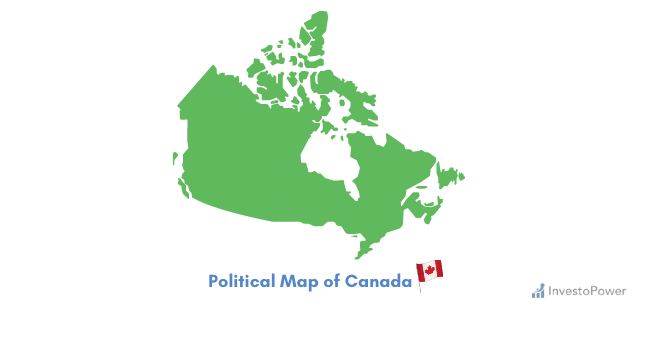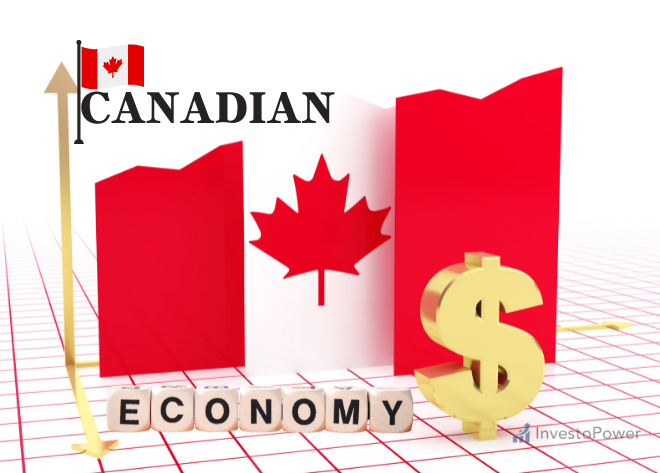Table of Contents
Introduction to Economy of Canada
Canada is an independent country located in North America and the economy of Canada is highly developed. It has ten provinces and three territories. The country stretches from the Atlantic to the Pacific and also to the Arctic Ocean to the north. In terms of landmass, Canada is the second-largest country in the world. It shares one of the longest international borders with the United States, its largest neighbor, to the south. Canada is a federation with Ottawa as its federal capital. It is a parliamentary democratic country based on the Westminster system with the British monarch as its constitutional head.
Canada is a member of many international and supranational organizations like the United Nations (UN), North Atlantic Treaty Organization (NATO), the G7, the Group of Ten, the G20, the Organization for Economic Co-operation and Development (OECD), the World Trade Organization (WTO), the Commonwealth of Nations, the Arctic Council, the Asia-Pacific Economic Cooperation, the Organization of American States, and many more.

Canada is officially a bilingual country with both English and French as its official language. It is ranked as one of the most transparent countries of the world in terms of government transparency, quality of life, freedom of speech, economic freedom, civil liberties, and education. Like the US, Canada is also considered a country of immigrants which makes it one of the most ethnically diverse countries in the world. As a parliamentary democracy, its executive is headed by a Prime Minister while the British monarch is the head of the state with a Governor-General representing her in Canada.
Canada Economy Facts and Figure:
| Neighbors | United States of America (USA) |
|---|---|
| Area | 9,984,670 km2 (3,855,100 sq mi) |
| Population | 38,436,447 (2021 estimate) |
| Capital | Ottawa |
| GDP | $2.027 trillion (2021 estimate) |
| Currency | Canadian Dollar (CAD) |
| Main Imports | Crude oil, chemicals, consumer goods, machinery and equipment, motor vehicles |
| Main Exports | Crude petroleum, chemicals, electronics, electricity, industrial machinery, wood pulp, timber, natural gas, plastics, motor vehicles and parts, aircraft, etc |
| Import Partners | United States (52.2%), China (-12.1%), European Union (11.4%), Mexico (6.2%), Japan (3%), Others (15.1%) |
| Export Partners | United States (76.2%), China (-4.1%), European Union (7.7%), Mexico (1.5%), Japan (2.1%), Others (8.4%) |
Canada Economy Type and Economic Growth
Canada is a highly developed country with a mixed economy. Its GDP is the 9th largest in nominal terms and 15th largest by Purchasing Power Parity (PPP). Like any developed country, the economy of Canada is also dominated by the service sector. Canada is rich in natural resources with having the third-largest proven petroleum reserve in the world. It is the fourth-largest exporter of natural gas.

Due to these reserves of fossil fuel, Canada is sometimes called an “energy superpower”. Another important aspect is that Canada is considered the least corrupt country in the world which is also one of the globe’s top ten trading nations. The country has a very low level of income disparity and the disposable income of its citizens is well above the OECD average. Canada boasts the Toronto Stock Exchange which is the eighth-largest stock market in the world. Its market capitalization is over US$3 trillion.
Despite Canada’s being a highly advanced economy, its primary sectors like logging and energy industries still play a major role. The country has a robust industrial sector in the central part of Canada with the automobile and aircraft industries taking the lead. Having been blessed with the world’s longest coastline, the country holds the 8th largest commercial fishing and seafood industry in the world. The country is also leading in the entertainment software industry. The country has a robust trade relationship with its largest and only neighbor the US with which it signed a free trade agreement called the North American Free Trade Agreement of 1989 which removed all the tariffs between the USA and Canada.
Canada Economic System: Monetary and Fiscal Policy
Like a robust and thriving economy, Canada is also faced with managing both fiscal and monetary policies. It divided this responsibility between the Canadian federal government and the central bank. The Bank of Canada (BoC) is the central bank of Canada and is tasked with managing the nation’s monetary policy. The entity came into existence through an act called the Bank of Canada Act of 1934. The BoC is the sole institution tasked with issuing and regulating banknotes.
Monetary policy is decided by a council called the Governing Council which consists of its governor, the senior deputy, and four other deputy governors. The most interesting fact about BoC is that there is no time limit to make changes in its policies. Contrary to the prevailing norm all over the world, this governing council meets every single working day to decide and change its pronouncements.
The Bank of Canada also has a “dual mandate” of maintaining price stability and exchange rate stability. The bank is expected to keep the inflation within a range of 1 – 3%. The BoC ensures price stability through participating in open market operations and frequent adjustments in the lending rate.
The BoC’s main tool in conducting its open market operation is called the Large Value Transfer System (LVTS). The LVTS aids commercial banks throughout Canada to borrow and lend cash to each other so that they can get into daily operations. The lending rate that is charged on those funds is called the bank rate. The BoC alters this rate to control the flow of money in its banking system.
Fiscal policy, on the other hand, is the exclusive domain of the Canadian government. It does that by a balancing act between taxes. Through it, the Canadian government either spurs or contracts the economic activities going on in the economy. When the economy is going through a tough time like a recession, the government tends to reduce the taxes to have more disposable income at the hands of Canadians.
Whereas when the economy of Canada is growing too fast and inflationary pressure is setting in then the government increases those taxes. The basic premise of Canada’s fiscal policy is that it tends to keep a thriving labor force and the nation’s stock of industrial installations and machinery employed at comparatively high levels, but without triggering inflation.
Canada Economy Facts: Economic Indicators for CAD
The Canadian Dollar or CAD is the sole legal tender of Canada. This is also known as “loonie”. Canada’s being a pacifist nation makes its economy and currency less prone to fluctuation via global events like instability in the Middle East or the Taliban takeover of Afghanistan. Due to Canada’s overreliance on the export of commodity goods, the CAD is also considered as a “commodity currency”.
However, there are economic indicators that have a bearing on the value of CAD and those are discussed below:
-
Consumer Price Index (CPI)
Similar to central banks throughout the world, the Bank of Canada also keeps track of what is happening in the goods and services sectors. Since maintaining price stability is also an important goal of the BoC, this institution closely watches this indicator for clues.
-
Gross Domestic Product (GDP)
source: tradingeconomics.comThis is the broadest measure when it comes to the health of the economy. If the economy is not growing the way it was expected to then the central bank reduces the rate and vice versa.
-
Trade Balance
The economy of Canada is very sensitive when it comes to its trade balance. Being a commodity-driven economy, the value of the CAD gets affected very greatly by the condition of the trade balance.
-
Ivey Purchasing Managers’ Index (PMI)
The PMI is a measure that has been put in place to gauge the opinion of the business leaders about the near-term future of the economy. A reading above 50.0 points means the business sector is thriving. Whereas any value less than 50.0 points hint otherwise.
Factors that Affect the CAD
Like any other currency of the world, the CAD also gets affected by the internal dynamics of the economy of Canada as well as any news that may be coming out of this country’s business and industrial sectors. Those are discussed below:
-
US Economic Data
The economic data that is coming out of the United States, Canada’s largest trading partner will definitely have some repercussions for CAD. The timing of those data is usually the same as the data that comes out of Canada.
-
Acquisitions and Mergers
Mergers and acquisitions between Canadian and American companies are quite common due to the close proximity of both countries. Any positive news on that front will have a good bearing for CAD and vice versa.
Trading Tactics for USD/CAD
USD/CAD is exchanged in amounts that are denominated in the USD. It’s mostly traded in two different types of lots like standard lot sizes of 100,000 USD and mini lot sizes are 10,000 USD. The pip value, on the other hand, is denominated in Canadian dollars and is calculated by dividing 1 pip of USD/CAD by USD/CAD’s prevailing rate. For instance, if the ongoing exchange rate for USD/CAD is 1.1000 and if we want to trade one standard lot, then one pip would equal 9.90 USD.
USD/CAD is only traded during the New York session, this currency pair is highly prone to “fakeouts” during the other two trading sessions. In other words, if any trader is experiencing a break in the support level than the USD/CAD during the London, and Tokyo sessions then mostly it will be a fakeout.
For determining the movements and trajectory of this pair, economic data coming out from both Canada and the United States should be looked for. For example, a positive report from Canada and a negative report coming out of the US will be a good reason to go short USD/CAD. Besides, since CAD is a commodity currency, looking for oil price movement will provide good cues for this pair as well. As per statistics, since 1988, the rate of USD/CAD and the price of oil have been inversely correlated by as much as 68%.







